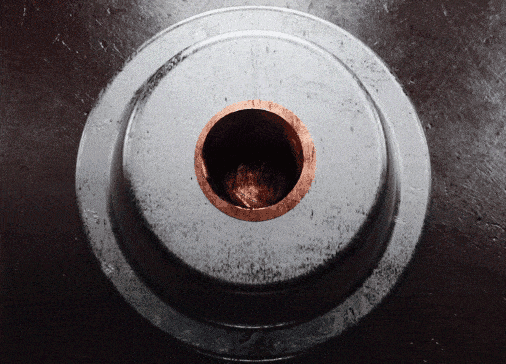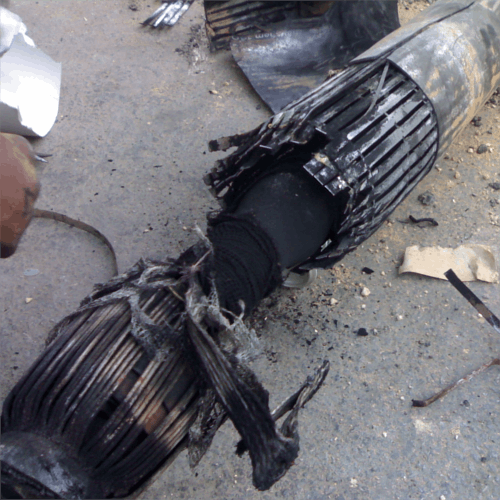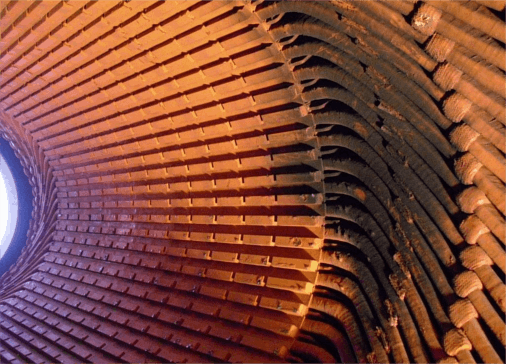PD is an electrical discharge that occurs across a localised area of the insulation between two conducting electrodes, without completely bridging the gap (see IEC 60270). It can be caused by discontinuities or imperfections in the insulation system.
PD activity is an indication of an incipient medium voltage (MV) or high voltage (HV) insulation fault and is widely regarded as the best early warning indicator of electrical insulation deterioration in MV and HV electrical assets within power networks. In general PD occurs in systems operating at voltages of 3 kV and above; however it should be noted that in some cases PD can also occur at lower voltages (i.e. Variable Speed Drive / Variable Frequency drive motors and LV designs).
Typical drivers for implementing PD programmes include; supporting Condition Based Maintenance (CBM), avoiding unplanned, often costly, outages and improving network reliability/uptime, increasing safety and extending asset life/delaying capital replacement (under OPEX budgets). The major advantage of On-line PD testing and monitoring over off-line, is that it is non-intrusive, causing no interruption to service, and is performed under normal operating conditions (voltage, frequency, load and environmental), therefore no overstressing due to overvoltage.

PD can occur at various points in the insulation system, for example: voids or cavities in solid or liquid insulation medium, at the interface between insulation layers such as delamination.
PD can be observed at various stages during the assets lifecycle. From the transportation, to the installation and commissioning of new equipment – often caused by improper installation or poor design and/or workmanship (particularly in cable joints and terminations which are made up on-site). Poor workmanship at the manufacturing stage of an asset can lead to premature failure, with a disproportionately high percentage of insulation failures being observed within the first 1–3 years of service compared to the rest of the working life of the asset.
PD activity can start under normal working conditions in MV/HV assets where the insulation condition has deteriorated with age, or has been aged prematurely by thermal or electrical over-stressing, or due to improper installation.

Once incepted, Partial Discharge can develop into electrical trees and surface tracking, eventually leading to a breakdown between phase and earth or between phases of a 3-phase system. Depending on the discontinuity or imperfection type and location in the insulation system, a failure can take anything from a few hours up to several years to occur.
While some discharges can be extremely dangerous to the health of the insulation system (e.g. discharges within polymeric cables and cable accessories), other types of discharge can be relatively benign (e.g. such as corona into air from sharp, exposed points on HV overhead networks). The key to Partial Discharge testing and monitoring is to be able to differentiate between the different types of PD which can occur and provide a reliable location, enabling remedial repair works to be conducted during scheduled outages prior to failure often causing costly outages and the associated downtime or production loss.

On-line Partial Discharge monitoring allows for trends in activity to be observed over time. While PD is incepted by the high-voltage stresses, it can be influenced by the other operating and ambient stresses, for example; Load, Temperature, Humidity, etc. As PD activity is often present well in advance of insulation failure, by observing and understanding the PD over time it is possible to make strategic decisions about refurbishing and renewal programmes; including ordering and delivery of key parts with long lead times. Often it may not be necessary to replace an older asset which is perfectly serviceable, and thereby the capital replacement cost can be deferred through the use of electrical condition-based maintenance.
Partial Discharge testing and monitoring is particularly important when the medium or high voltage asset is critical to the operation of a network; this may be due to the asset’s age, limited network redundancy, past failures or the financial consequences of a failure. Qualification of PD criticality within the complete network can be achieved quickly and easily using Monitra technology to provide an early warning of any incipient insulation faults. Examples of MV and HV plant that can be tested/monitored include:
